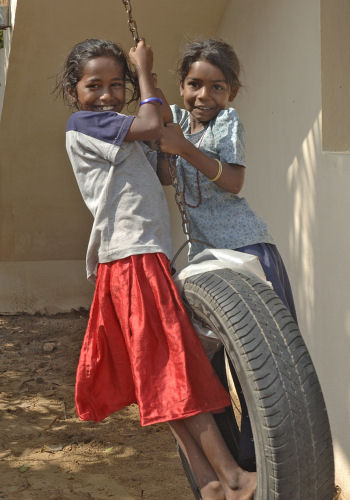Tsunami One Year on: India
26/12/2005

Life is gradually coming back to normal
SOS Children’s work in the tsunami-affected areas of Southern India
The calm and serene life in the coastal belts of Tamil Nadu and Pondicherry was shattered by the devastating Tsunami which struck the coastal belts of both the states in the morning of 26 December 2004 and left behind a trail of destruction of human life, property and standing crops. The magnitude of the damages was such that it caught everyone napping including the local administration. Initial reports in visual media reported a grim situation in Chennai and Pondicherry state. It was only late in the night of 26 December that the reports of destruction from Nagapattinam and Kanyakumari started pouring in and everyone realised the intensity of the catastrophe. It took the better part of a fortnight to assess the actual damages to houses, boats, livestock and most important the loss of human lives.
SOS Children joined the relief work during the morning of 28 December 2004. The ground realities in Nagapattinam and Velankanni were very tough and testing. The whole place resembled a battlefield - bodies lying all over the place - it was a gory sight. The beaches which were, until a couple of days earlier, places full of mirth and joy both for the locals as well as the tourists became a graveyard with human corpses scattering the ground. The towns of Nagapattinam and Velankanni were deserted; survivors had fled for their lives. There were heart rending scenes everywhere. A newly married woman lost her husband on the second day of marriage and another woman had lost her all her children and husband in the tsunami. Thousands of people were seen fleeing from Nagapattinam and Velankanni with their surviving family members and belongings on their head.
There was shortage of food, medicines, clothing and other essential items. Mass looting of shops in the city of Nagapattinam meant that all the shops were closed until the first week of January. Entire villages had been wiped out. A 30 tonne boat was found tossed 3 km inland due to the tsunami. Every time a vehicle stopped the people surrounded the vehicle begging for food. Most of the children and elders looked malnourished due to hunger and starvation. There was expectancy in their looks when someone came forward. Everyone had a sad story to tell. Life in the few days and weeks was disorganised and nomadic for almost everyone. People were asked to vacate their villages fearing the outbreak of an epidemic. They were put in transit camps.
The living conditions for our staff in Nagapattinam were very difficult in the first couple of months, with the district administration evacuating the entire population to nearby towns of Thiruvarur. The water became contaminated and the atmosphere was full of the stench of human deaths. Even the use of tonnes of bleaching powder and the use of face masks could not get rid of the feeling of extreme nausea and giddiness in the initial few days. Water, food and accommodation became very difficult in the first few weeks. Travel and communication was also difficult in the initial days.
SOS Children’s Villages of India started 16 child protection centres starting from Pondichery to Kanyakumari including the worst affected districts of Nagapattinam and Cuddalore of Tamil Nadu. Besides the distribution of food, various activities were organised to help the children to overcome their trauma and health camps were set up. After one month of such activities, longer term efforts were put into action to enable not only the relief, but also rehabilitation and re-construction programmes that were so vital for the area. To help families rebuild their lives, one thousand families in six villages of Tamil Nadu and Pondichery were helped through the provision of temporary shelters, provisions for three months and utensils. 238 mechanised boats complete with nets were given to groups of families. Seven children’s parks, four day care centres and construction of more than 500 permanent houses have been undertaken in the affected villages.
SOS Children has also supported almost 2,000 children, from 900 families, with their education, nutrition and health. Three main multipurpose activity centres and four satellite centres are in operation in affected villages and a temporary SOS Children’s Village, based in a rented house in Pondichery, currently provides a home for 26 children. The task of identifying needy families to receive support and start up grants was undertaken with the participation of the local communities themselves and volunteers have assisted in the running of activities for the children.
Life is gradually coming back to normal in all the villages and fishing activity has resumed. Children are going to school equipped with school bags and other stationary items and are all excited about moving into the permanent houses in the near future. They are looking forward to the future with renewed hope and enthusiasm. Activities to help children overcome their trauma, child care, construction of sanitary facilities and temporary shelters are among the activities SOS Children has undertaken with the support of other NGOs. The local government has been very co-operative and has participated with SOS Children in its tsunami relief and rehabilitation work, in particular in helping with the reestablishment of infrastructure in the affected areas.
This article is part of the tsunami one year on review.
Relevant Countries: India.